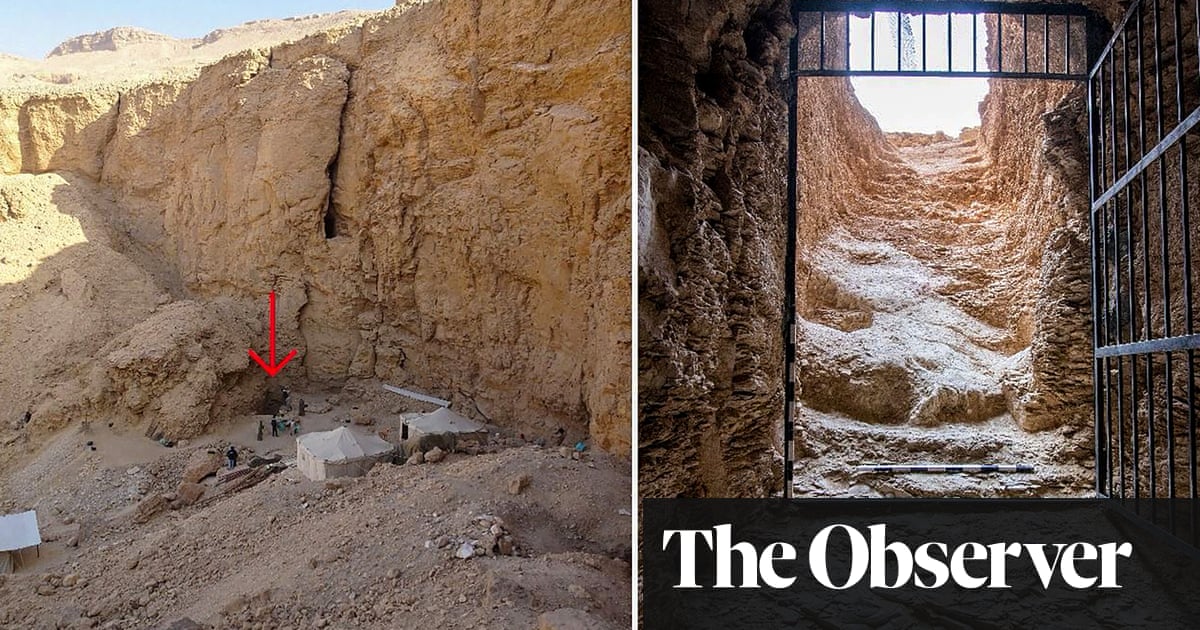The sores were unlike anything veteran anglers had seen before. Black, swollen and blister-like, they started appearing on fish being caught in the River Severn in early summer.
For anglers who spend many hours on the banks of the Severn around Shrewsbury, the blistering skin was yet another warning that the river, and its wildlife and habitats, are suffering.

Phil O’Callaghan, an angler, noticed the blisters on the first day of the season as he fished the Severn at Bicton Heath, north-west of Shrewsbury, this summer. “I have seen these sores in person and they look really nasty.
“I am not a scientist, I am just someone who has spent my life on the river, as an angler, a canoeist and a swimmer. I have seen it change for the worse; the river doesn’t clear any more, you cannot see the gravel, there is no weed, and at the near margins the bottom is covered in a horrible, black, smelly silt. These sores are just the latest thing we are seeing, and they are another cause for serious concern.”
O’Callaghan is one of an army of anglers, swimmers and river lovers who are working together in an attempt to stop the decline of the Severn. They have seen the devastating decline of the neighbouring Wye and they are trying to stop the same fate happening to the Severn as it, like the Wye, is subjected to excessive nutrient pollution from intensive poultry farming and record levels of raw sewage discharges from Severn Trent facilities.
Over the last two years, O’Callaghan has joined 68 other anglers along the river who dedicate hundreds of hours to monitoring the water. They have taken more than 970 samples from 70 sites to record phosphate, nitrate, dissolved oxygen, turbidity, ammonia and temperature, which they send to Bristol University for analysis. Images of the sores on fish have been sent to the Environment Agency.
Results of the Angling Trust’s 2024 water-quality monitoring report on the Severn have been shared with the Guardian. Glyn Marshall, who coordinates the monitoring, said: “The state of water in the catchment has not improved. If anything, it has got worse.
“My most recent phosphate sample in Worcester was one of the highest I have recorded. When there are periods of dry hot weather, I can see the algae blooms in the river and the bed of the river is still covered in the horrible brown gunge. The biodiversity of all the waterways is being totally compromised and we need to make sure that the health of the rivers and streams in the Severn catchment is improved for future generations.”

Analysis of the results from 52 sites for the report shows 61.5% had phosphate levels above the upper limit in the EU-derived Water Framework directive, part of Environment Agency regulations, compared with 42% in 2022-23.
Thirty-one areas, or almost 60%, had a mean average for nitrate exceeding 5ppm (parts per million) – considered the acceptable upper limit – an increase from 35% in 2022-23.
High levels of phosphate and nitrate pollute rivers. This triggers eutrophication, where the excessive plant and algal growth creates high levels of bacteria which reduces oxygen levels and kills plants and wildlife. Sewage pollution and agricultural runoff are both causes, their impacts varying from urban to rural areas.
On the Severn, sewage pollution has soared. In the three years to 2023, there were 53,072 discharges of raw sewage into the river, more than 48 each day, according to data compiled by the trust. Their duration was 429,365 hours, more than 392 hours a day.
In more rural areas, it is agricultural runoff from intensive farming that is considered to make up 70% of the excess phosphate going into the river.
Alison Caffyn, who lives in Shropshire, is a member of the volunteer army attempting to protect the Severn. She has become an expert in intensive poultry units (IPUs) after discovering a dearth of data on the impact of mega farms in the Severn valley.
after newsletter promotion
“Over the years, intensive poultry units were cropping up all over Herefordshire and Shropshire and I realised there was nothing known about the issue and indeed very little research had been done, in the UK at least, about the wider impacts of intensive livestock units,” she said.
Caffyn spent years researching the units for a PhD, which saw her trawling back through Shropshire council planning records and then doing the same to track the scale of IPUs in Herefordshire, cross-referencing with satellite imagery and Environment Agency permit data.
When she turned to examine documents held by Powys council – to create a dataset for the main three counties in the Severn and Wye valleys – she discovered other researchers were doing similar work. Dr Christine Hugh-Jones and Margaret Tregear, both members of the council for the protection of rural Wales, had also been head down in planning records going back several years.
When the three women combined their research, they created an unprecedented and comprehensive dataset on the number of chickens being housed in industrial-style units in the three counties across the Severn and Wye valleys, which they update regularly. The latest data, shared with the Guardian, reveals more than 51m chickens are housed at any one time in intensive poultry units in Powys, Herefordshire and Shropshire.
Caffyn is using her research to bring a judicial review against Shropshire council’s decision to grant planning permission to another intensive poultry unit, housing 230,000 birds on nine hectares of land at Felton Butler, north of Shrewsbury.
The new intensive unit is 400 metres from an existing IPU, which appears to be in breach of Defra biosecurity regulations that there should be a 3km buffer zone between high-density poultry units.
Shropshire council approved the planning permission after the applicants promised they would transfer the manure to a third-party anaerobic digestion unit. But Caffyn says the processing of manure at an off-site anaerobic digestion unit will not cut nitrate and phosphate groundwater pollution. She points to research which says the digestate still contains all the nitrogen, phosphorus and potassium which was in the manure, and will have a negative impact when it is spread on farmland.
“We feel enough is enough. We simply cannot allow the creation of more of these giant clusters of polluting poultry units or, before we know it, the River Severn will be suffering the same pollution load as the neighbouring Wye,” she said.
Severn Trent said it had started a £450m programme to cut spills from storm overflows into the river, which was progressing at pace.
Neerja Upadhyay, head of river health enhancement at Severn Trent, said: “Since kicking off only a few months ago, our teams have been making some radical improvements that we’re already seeing benefits from.
“Increased storage on sites, repurposing existing parts of the network, installing valves and making network enhancements is all helping us make progress to reduce spills and improve river health, which is exactly what we and our customers want.”

 3 months ago
61
3 months ago
61













































